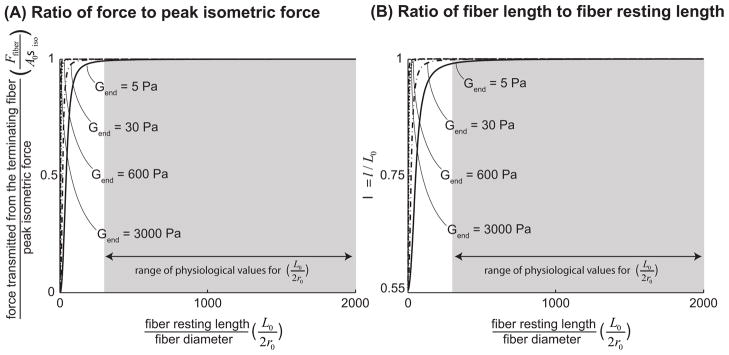Figure 4.
The ratio of force transmitted laterally through shearing of the endomysium from a terminating fiber to peak isometric force that can be generated in a fiber of the same cross-sectional area, plotted against the ratio of fiber resting length to fiber diameter (A). λ, the ratio of fiber length at equilibrium to fiber resting length (B). We normalized the force transmitted from the fiber (equation 2.1.2), by the fiber’s peak isometric force, Fiso = Aσiso. The quantity plotted on the vertical axis (A) is therefore Ffiber/Fiso = σfiber(λ)/λσiso. From equation (2.1.1.2) it is clear that λ is a function of L0/2r0, the ratio of fiber resting length to initial fiber diameter, Gend, endomysium shear modulus and κ, and thereby Vf, fiber volume fraction. For values of λ smaller than one, Ffiber/Fiso is a monotonically increasing function of λ. In these plots fiber volume fraction (Vf) was held constant at 90% (Typical for a healthy muscle (Table 1)) and endomysium shear modulus (Gend) was varied from 5Pa which is lower than any estimates based on the literature (Table 1) to 3000Pa which is on the same order as the highest available estimates based on the literature (Table 1). The shaded region highlights the physiologically relevant range of values for L0/2r0 based on literature and cited in Table 1.

